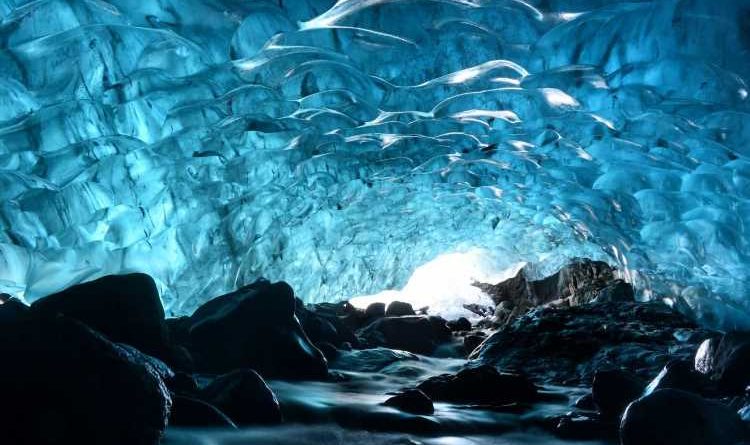Iceland Has Reopened to Travelers—Here’s Everything You Need to Know
© Photo by Albert Russ/Shutterstock
Iceland Has Reopened to Travelers—Here’s Everything You Need to Know
Photo by Albert Russ/Shutterstock Entrance of an ice cave inside Vatnajokull glacier in southern Iceland.
Load Error
Before you book your ticket . . .
Make sure you can show proof of one of two things: a full COVID-19 vaccination—be it Pfizer-BioNTech, Moderna, AstraZeneca, or Johnson & Johnson (Janssen)—via one of the official accepted forms, or an accepted document that shows prior COVID-19 infection (for example, a positive PCR-test that’s older than 14 days). Note that for proof of prior infection, you need documented laboratory results—clinical diagnoses and rapid diagnostic tests (antigen or antibody tests) are not accepted.
All visitors to Iceland, including children, need to preregister on this website before entering the country.
A COVID-19 PCR test is not required to board your flight to Iceland—as long as you’re vaccinated or can prove previous infection. Just don’t expect to have the plane to yourself on the way over. Between the excitement of Iceland’s volcano tourism, its reopening to vaccinated travelers, and the country’s perennial appeal, AFAR’s trusted travel advisors are reporting a flood of interest and bookings.
What are the COVID counts and vaccine rates in Iceland?
Iceland has been lauded as one of the more successful countries at containing spring 2020’s COVID-19 infections. After the county managed to contain a larger wave of infections in fall 2020, an uptick in the British variant there led to a tightening of restrictions in March 2021. Those have since been relaxed, per recommendations by the chief epidemiologist.
Iceland has approved a COVID-19 vaccination for use and is currently providing free, nonmandatory vaccinations to citizens. As of 2019, 356,991 people live in Iceland; according to official Iceland vaccination statistics updated in early May, more than 36,000 residents have been fully vaccinated, and more than 100,000 have received at least one dose.
As of April 26, 2021, the U.S. State Department lists Iceland as a Level 3 Travel Health Notice (Reconsider Travel) “due to COVID-19 related restrictions,” indicating a “high level of COVID-19 in country.” The country has reported 29 coronavirus-related deaths since February 2020. The CDC warns: If you must travel to Iceland, get fully vaccinated before travel. All travelers should wear a mask, stay six feet from others, avoid crowds, and wash their hands. By comparison, the U.S. State Department currently lists Mexico and the United Kingdom as Level 4 (Do Not Travel) while Australia, Japan, and French Polynesia are Level 3.
What kind of mitigation rules are in place?
Being fully vaccinated doesn’t ensure you can’t spread variants of the virus, so heeding the country’s social distancing and masking rules remains paramount.
Social-distancing rules are still in effect in Iceland and will be through at least May 5, when they’ll be updated on the country’s official COVID-19 page. You must keep six feet between people who are not “closely linked” to you and wear a mask when social distancing isn’t possible. Face masks that cover the nose and mouth are still required on public transport (all operating as normal) and in taxis, and there are limits to the number of people allowed inside theaters, grocery stores, pharmacies, bars, and so on.
Iceland is extremely dependent on tourism (2.3 million visitors arrived there in 2018, according to the Icelandic Tourist Board). And while the tourism board isn’t running overt campaigns targeting international visitors yet (though the incredibly scenic backdrops on the official Iceland tourism Instagram account are enough to woo us), the sector’s importance is undeniable. If you follow Iceland’s protocols and laws, it’s safe to say you will be welcomed.
Do I need to quarantine on arrival or departure?
All travelers are required to take one COVID-19 test (free of charge) upon landing at the airport in Iceland. You can head to your accommodations after but must stay there while you wait to get the result back via email or SMS, usually within 6 to 24 hours. After that comes back negative, you are free to explore the country. (There is no need to quarantine or to take another PCR test five or six days later.)
What are the requirements for returning to the United States?
Negative COVID-19 tests are required to enter the United States from a foreign country, including Iceland. This applies to everyone, including all U.S. citizens and fully vaccinated travelers. The test must be taken with three days of your return to the U.S. and can be booked up to a week before your departure date. (A list of COVID-19 test facilities around the country can be found here. Note that some but not all require advance appointments.)
Expect to pay 7,000 ISK (about US$56) and results can take 12 hours to get back, so don’t wait until the day before your flight to get tested. There’s no need to quarantine in Iceland while you wait for your test results. Upon arrival in the U.S. with your negative COVID-19 test result, there’s also no need to quarantine.
What about old-school things like “needing a visa”–does that apply here?
Americans don’t need a visa to visit Iceland and can stay for up to 90 days for tourist or business purposes. A full list of nationalities that require visas to travel to Iceland can be found here.
How much is actually open (museums, bars, restaurants)?
From museums to outdoor tours, expect to find most things open and operating across Iceland, albeit under new COVID-19 norms, with reservations often required and reduced hours and capacity possible.
Restaurants are open but those that serve alcohol have a 9 p.m. curfew and allow a maximum of 30 guests. Swimming pools and hot springs, including the famous Blue Lagoon attraction, are open but operating at limited capacity.
To be safe, call ahead of time to make sure whatever you’re planning to do is available. (Most Icelanders speak excellent English, but you can always request your hotel call for you.)
What airlines have flights to Iceland right now?
Delta’s daily service from JFK started back up on May 1. Delta will resume daily flights from Boston to Reykjavík–Keflavik on May 20 and from Minneapolis/St. Paul on May 27.
United begins daily service from Chicago to Reykjavík July 1 to run through October 3. United’s daily flights from Newark to Reykjavík resume June 3 through October 29.
Icelandair is currently only guaranteeing flights to Reykjavík out of Boston, with more flights expected to resume in June. It is possible to book flights out of JFK-New York but they’re sporadic.
A recent search on Google Flights for round trips from Boston and New York were about $350 and about $800 from Los Angeles and San Francisco.
Any suggestions on places to stay or tour operators?
Hidden Iceland
AFAR’s digital content director Laura Dannen Redman will be flying via Icelandair out of JFK in May and traveling with Hidden Iceland, a bespoke travel company that specializes in small group and private tours with an emphasis on active travel. “I’ve been wanting to take a trip with Hidden Iceland for years—particularly a glacier hike—so I’ve signed up for a two-day Jökulsárlón Glacier Lagoon tour and hike in the UNESCO protected Vatnajökull National Park. It’s in the southeast of the country, but we’re making time to come back to the southwest to try to spot the lava flow at Fagradalsfjall. Iceland is made for a socially distanced trip—I’ll report back!”
G Adventures
From now until June 30, small tour operator G Adventures is marking down some of its most popular itineraries—including several in Iceland—for trips departing between May 1–October 31, 2021. You can save up to 15 percent on six Iceland itineraries with this adventure travel company founded in 1990 by Bruce Poon Tip, an AFAR 2018 Travel Vanguard winner.
Our pick is for the six-day Trekking Eastern Iceland tour, which is marked down to $1,529 per person (from $1,799) for its June 6 departure. During the guided trek, you’ll get to hike across the lava fields of Leirhnjúkur, along the black-sand beaches of Brúnavík inlet, and more.
All 2021 G Adventure bookings made now through June 30 can be canceled and rebooked up to 30 days prior to departure date to allow travelers a little more peace of mind in case they have to reschedule.
Classic Journeys
You can’t go wrong with a Classic Journeys guide—locals who are handpicked by the company founders based on their knowledge, skill, and ability to make you feel welcome, wherever you are. In Iceland, you may be led by a descendent of 9th-century Vikings. Their Iceland Culture + Walking itinerary is a great bet: “Guided by dyed-in-the-wool Icelanders, you’ll enjoy the captivating chaos of Iceland’s nature, interwoven with fascinating Norse mythology. Walk some of the most cinematic paths on the planet—over ancient glaciers, vivid moss fields and black-sand beaches—to Viking ruins, waterfalls, and fishing villages for lunch with local families.”
Hotels
Hotel Ranga, about 60 miles south of Reykjavík on the island’s south coast, where the suites are themed after the seven continents, has an onsite observatory for stargazing and offers tours through Southcoast Adventure to ice caves, volcanoes, and glaciers as well as horseback adventures.
The Retreat at Blue Lagoon is an AFAR favorite spa hotel that gives you private access to the famed lagoon, while the minimalist-chic Silica Hotel gives you easy access to the Blue Lagoon and Silica Lagoon.
Rental cars
Holdur, the largest rental car company in Iceland, has rental locations across the island and minivans, cargo vans, campers, and motor homes in its fleet.
With additional reporting by Laura Dannen Redman and Lyndsey Matthews.
>>Next: How to Have Your Dream Vacation in Iceland
Source: Read Full Article




